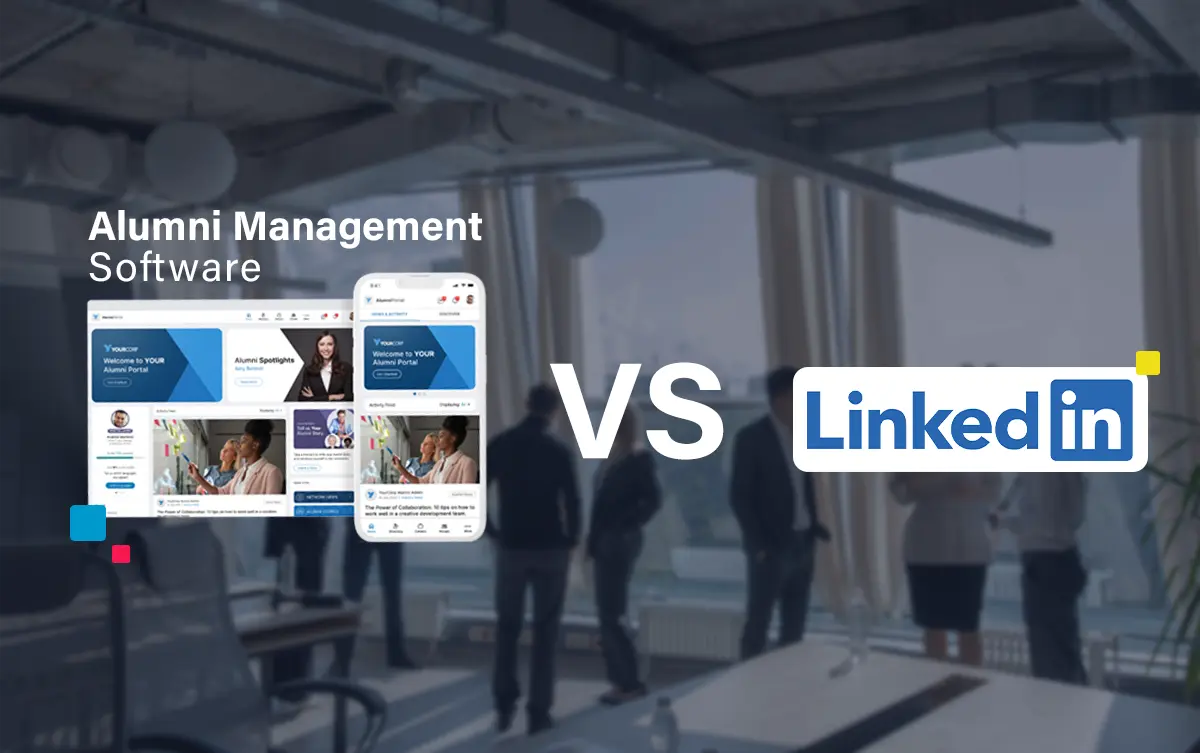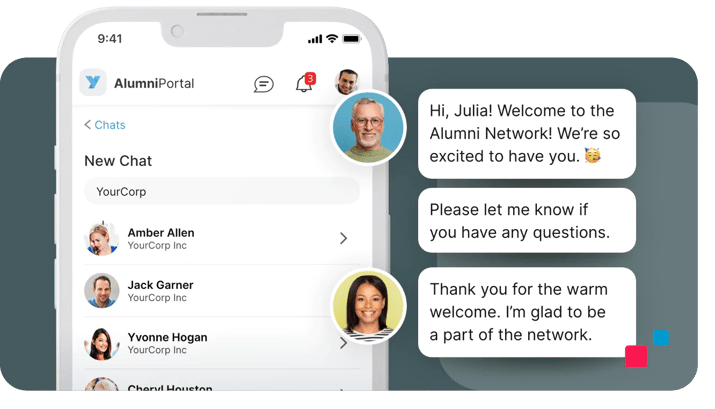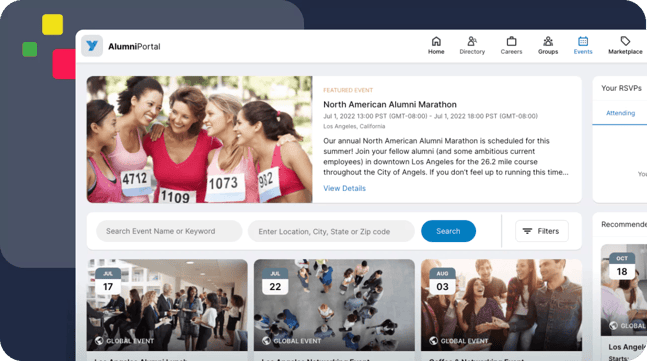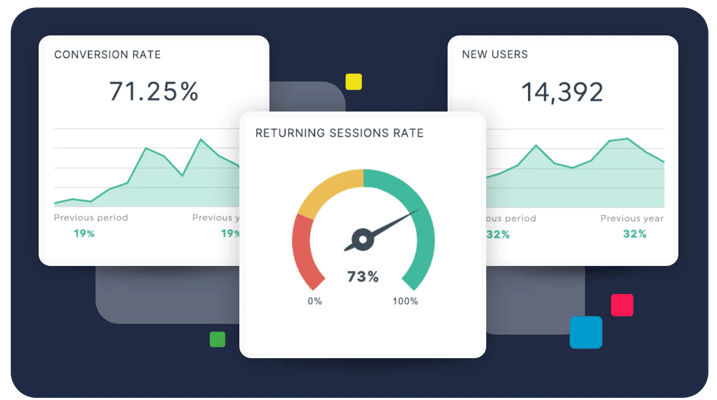Corporate Alumni Programs: Everything You Need to Know
Is a corporate alumni program the right next step for your business? We're here to answer all your alumni questions before you start building your...
Read more
Are you missing a trick by using LinkedIn groups instead of a specialised Alumni Management Platform to engage your alumni community?
In the age of professional networking, it's tempting to rely on familiar platforms like LinkedIn for alumni connections. However, when it comes to maximizing the potential of your alumni program, a dedicated alumni management software proves to be the game-changer.
We often hear the question: Why not just use a LinkedIn group? We'll delve into the distinct advantages of leveraging alumni management software over a LinkedIn group. From tailored engagement features to data control and community-building tools, discover why making the switch is not just about convenience but a strategic move towards unlocking the full spectrum of benefits for both your organization and its valued alumni network. Do you know that LinkedIn themselves use alumni management software to run their very own alumni program?
Defining a successful alumni program may differ between organizations. When building an alumni program, it is crucial to consider what the goals of your program are and only then choose the platform that most fits your needs. Some alumni goals to consider include:
Community Engagement - A strong sense of community involvement makes the alumni program a valuable resource for professional growth, networking, and lifelong connections. An engaged community transforms the program from a mere network into a thriving hub where individuals find camaraderie and value.
Business Leads - By transforming connections into tangible opportunities alumni networks serve as a fertile ground for referrals, collaborations, and partnerships. As members evolve in their careers, the network becomes a trusted source for potential clients, creating a valuable cycle of business growth. According to the founder of LinkedIn “Alumni are a great source of network intelligence—competitive information, effective business practices, emerging industry trends, and more”.
Career Development - From mentorship opportunities to exclusive job postings, these opportunities empower members to continually learn, grow, and navigate their careers. Tailored development opportunities and industry insights not only enhance individual career paths but also strengthen connections with the organization, making it a hub of support, opportunity, and shared success.
Sharing Insights – Collective wisdom not only keeps members informed but sparks innovation and collaboration. In successful programs, shared insights become a catalyst for continuous learning, making knowledge-sharing integral to the community.
Rehiring former employees - Alumni programs reinforce a consistent and compelling employer brand, making them a magnetic force for talent. Organizations can then save on recruitment costs by leveraging familiar talent through rehiring.
Your alumni program can unlock a multitude of advantages for your business, so you don’t want to fall short by not being able to reliably communicate with your former employees. We are living in an age of context, where you need to speak on a 1-2-1 basis with your alumni community and provide relevant, contextual data and information of value as opposed to a 1-2-stadium approach that can be found on a LinkedIn group. The EnterpriseAlumni platform offers features tailored to help you easily communicate and stay relevant in your alumni community.

The unique demands of a thriving alumni program call for a level of customization and specificity that goes beyond the scope of the general professional networking platform, LinkedIn. Here are just some things you can expect from an alumni management platform that LinkedIn do not offer:
Tailored Engagement Features: Alumni management software provides tailored features specifically designed for alumni engagement. This includes customized event management, mentorship programs, and specialized communication channels that cater to the unique needs of the alumni community.
Data Control and Privacy: Alumni management tools often offer greater control over data and privacy, ensuring that sensitive information is handled securely. This level of control is crucial for institutions and organizations looking to maintain the confidentiality and integrity of their alumni data.
Integration with Institutional Systems: Seamless integration with internal systems is vital. Alumni management software can effortlessly integrate with an institution's databases, ensuring that information stays up-to-date and aligns with the organization's broader goals.
Community Branding: Building a sense of community requires more than a generic platform. Alumni management tools allow for customization and branding that aligns with the identity of the institution, fostering a stronger sense of belonging among alumni.
Targeted Communication: While LinkedIn offers a broad reach, alumni management software enables targeted communication with specific groups or segments within the alumni network to boost engagement. This is essential for tailoring messages, events, and opportunities to the unique interests and needs of different alumni cohorts.
All of these features are crucial for your alumni program to run smoothly and for your organization and alumni to benefit from a program. That is not to say that LinkedIn is not important in alumni relations, but it falls short for comprehensive alumni program features.

LinkedIn excels as a versatile platform for professional networking and serves a broader purpose than alumni management. It is your go-to space for building connections, expanding your professional network, and staying in touch with contacts from various points in your career.
Its user-friendly interface and features make it an invaluable tool for showcasing your professional journey and staying updated on industry trends. However, when it comes to the specialized needs of alumni engagement, LinkedIn has its limitations. It doesn’t allow for the level of personalization, branding and data control that a community must have.
It's not uncommon to find alumni community groups on LinkedIn managed by individuals who have long departed from the company, perhaps having served as short-term contractors or lacking any genuine affiliation altogether. Unfortunately, those groups led by former employees don't always paint an accurate picture of a company, its objectives, and its messaging.
2. Multiple LinkedIn groupsThere are often multiple groups, each under the supervision of different individuals, showcasing diverse intentions and content influenced by regional or practice area distinctions. According to an article by Reid Hoffman, founder of LinkedIn “LinkedIn (the service) now hosts over 118,000 corporate alumni groups, including 98 percent of the Fortune 500. Yet surprisingly, most of these alumni groups have little to no relationship with their former companies”. Alumni are desperate to stay in contact, and not running your alumni program is simply a massive, missed opportunity.
3. Limited Data ControlAlumni data on LinkedIn is controlled by individual users, which can lead to challenges in maintaining accurate and up to date records and raises concerns about data privacy and security.
There are several companies with “Official LinkedIn Groups” that engage their Alumni Community and that run to many thousands of members. However with a group that size how does one provide relevant, engaging and valuable content to their entire Alumni Community? Does it support emailing just a segment with specific skills or create an event for just a region?
While LinkedIn serves as a valuable professional network, it falls short as a replacement for a dedicated alumni program, where the absence of a centralized 'one source of truth' undermines the cohesive and tailored experience essential for fostering connections and mutual growth among alumni.

LinkedIn currently has 1 billion users in over 200 countries and has changed the game for alumni relations. In a recent webinar with Chris Yeh and Reid Hoffman, founder of LinkedIn they discuss how “in 2014, if you wanted to reach out to alumni who'd left your company years and years ago, whatever information you had on them was no longer any good. There's no permanent way to contact them. Whereas now as long as their employment at the company is a core part of their professional identity on LinkedIn, you can actually find your alumni and reach out to them”. Before the creation of LinkedIn organizations had no way of staying in touch with their former employees, and once an employee has changed their email address or phone number – the chance of maintaining that relationship is next to nothing.
What LinkedIn brought to alumni management was a way for organizations to find and contact their alumni and in some cases, see what they are up to today. The problem here is that LinkedIn data is 100% reliant on people updating their own profiles and there is nothing to validate the data or keep it up to date. Relying on LinkedIn data could be problematic for alumni programs as they will struggle to find up to date contact details and send career information and opportunities out to former employees that is relevant.
Whether up to date data is needed for a successful alumni program is without question. Your program needs to be tailored towards your alumni, and to know what content they want to see, what events or webinars or positions they would be interested in you need to know important details about what your alumni have continued to do post working for you.
EnterpriseAlumni, a comprehensive alumni software platform introduced a feature called CareerSync which is “your always up-to-date resume”. Using AI algorithms CareerSync will search the internet and constantly update an individual's resume based on information publicly available. This means that whilst LinkedIn has an impressive number of active users and data, you most likely would need a specialized platform to fully engage your alumni with your program.
Without question, if you want to reap the benefits of having an alumni program a specialised alumni platform is the way forward. However, rather than an 'either-or' scenario, combining the strengths of LinkedIn for general networking with the precision of an alumni management tool can create a powerful synergy, ensuring both broad professional connections and focused alumni engagement.
Want to know if an alumni program is the correct next step for your business? Read our article Corporate Alumni Program: Everything You Need to Know.
NEWSLETTER


Is a corporate alumni program the right next step for your business? We're here to answer all your alumni questions before you start building your...
Read moreApril 2, 2024
This expert guide equips you with everything you need to know to create vibrant and engaging events that elevate your corporate alumni program.
Read moreMarch 18, 2024
Sadhana ran the award-winning Barclays Global Alumni programme, created the London Alumni Directors Forum and continues to share Alumni Management...
Read moreJanuary 22, 2024
Build new revenue streams, save on recruitment and enhance your employer brand, all through the power of alumni.